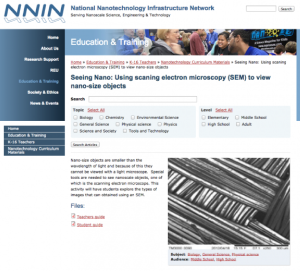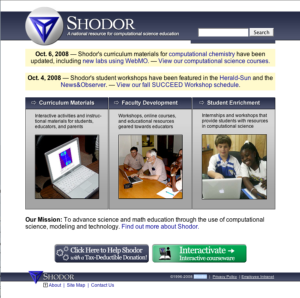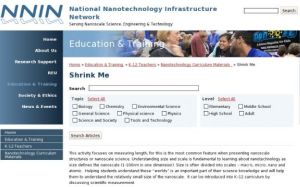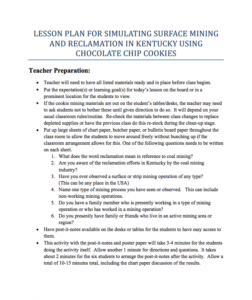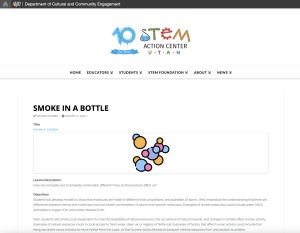Browse Resources
Resources | |
|---|---|
This lab, presented by the National Nanotechnology Infrastructure Network, teaches students about Scanning Electron Microscopy (SEM). Nanoparticles are too small to be viewed with a light microscope so a SEM must be employed which "uses electrons to image the surface of a material." A Teacher's...
This 25-page report, from Labrador Straits Academy, describes the design and construction of the underwater remotely operated vehicle (ROV) created by the Shark Tech team for the Ranger Class of the 2023 MATE ROV competition. MATE ROV is a global competition that challenges STEM students to build...
There are many curriculum materials, professional development, and student enrichment activities available on this website. These resources are designed for teachers and students ranging from K-12 through higher education. Most resources are interactive and engage the students on many different...
This lesson, presented by the National Nanotechnology Infrastructure Network, covers the general concepts of size and scale by focusing on measuring length. Students will learn about different scales of measure which is fundamental to learning about nanotechnology. After all, "helping students...
This lesson, presented by the National Nanotechnology Infrastructure Network, covers the metric system. Students will explore the use of the metric system in the activities, and also "read the How Stuff Works article –“How Nanotechnology Works” and answer questions about the article. Further...
This activity, created by Lily Bentley, was formed based on a hypothetical situation that has students research renewable and nonrenewable energy sources. In the activity's hypothetical situation: the year is 2012, and fighting in the Middle East has stopped exports of much of the world's supply of...
This lesson, from the Northern Wyoming Community College District, focuses on the principles of surface mining and reclamation in coal mining using chocolate chip cookies (where the cookie represents the earth and the chocolate chips coal the students will be surface mining). Using tools provided,...
This lesson, presented by the National Nanotechnology Infrastructure Network, is designed to introduce middle and older elementary students to nanoscale objects by comparing them in size to the visible world. Students will receive an introduction to exponents, decimals, and the metric system through...
This 7-page resource, provided by the Southeast Maritime and Transportation (SMART) Center, is a portside robotics educational module for middle school and high school students. During this module students will learn the "basics of the Engineering Design Process, that energy used in our environment...
This lesson plan from the STEM Action Center - Utah covers incomplete vs. complete combustion and is intended for sixth through 9th graders. During the lesson, students will "develop models to show that molecules are made of different kinds, proportions, and quantities of atoms." Students will also "...
| |
| ← Previous | Next → |
